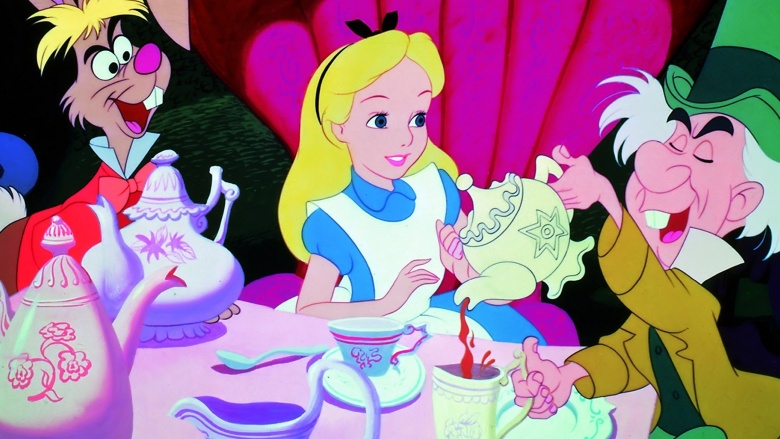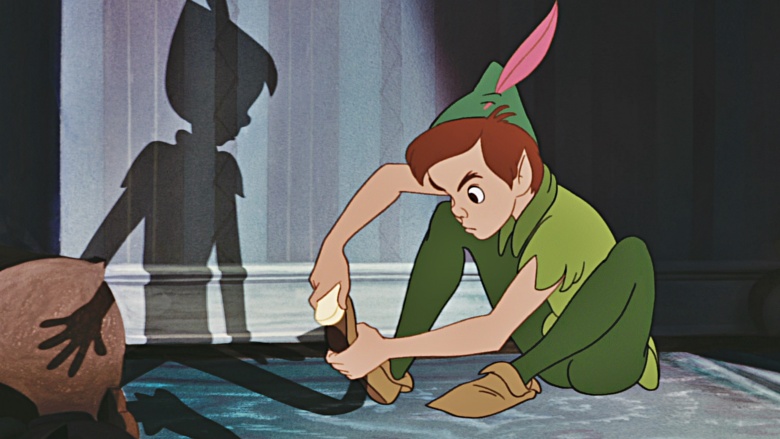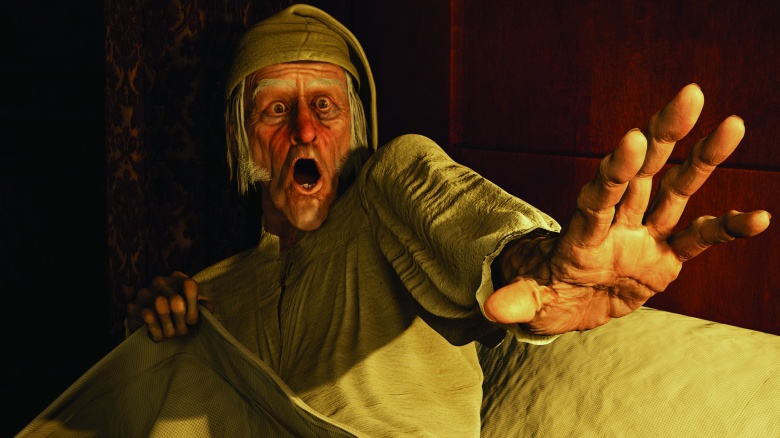Popular Fictional Characters Who Have Dark Secrets
Fictional characters may not be real, but they have to come from somewhere. Plenty of stories' heroes or villains likely have some real-world basis that help make them seem all the more real. Sometimes, however, those characters can spring from some kind of dark, strange, or tragic places—like the characters below.
Mario
As difficult as this may be to believe, Nintendo's flagship character, Mario of Super Mario Bros., was not inspired by a real life Princess-saving, mushroom-stomping plumber with a vertical leap that would make Jordan jealous. Shocking, right? Turns out, Minoru Arakawa, Nintendo of America President during the company's first foray into the States in the 1980s, felt the mustachioed man who originally appeared in Donkey Kong looked just like the real estate developer who owned the warehouse that served as Nintendo's U.S. headquarters. This all comes from the tech blog, Technologizer, who for some reason took it upon themselves to uncover the biography of Mario Segale, the unwitting inspiration and namesake of arguably gaming's most famous character.
Segale, an intensely private man, only publicly acknowledged any association with the character in the singular, but oft-quoted quip, "I'm still waiting for my royalty checks," which may or may not have denoted humor. The dark twist of the whole scenario comes from the full anecdote about the moment of inspiration, which supposedly involved Segale angrily demanding a late rent payment. This would mean that the Nintendo of America higher-ups were at best attempting homage, or at worst lightly mocking the man. No one could have anticipated that this inside joke could become a wildly popular piece of pop culture history. To this day Nintendo remains cagey on the subject, repeating only the basic facts that are already publicly available. For his part, Segale went on to great wealth in land development, as well as being a back-channel political force for the Democratic Party, though we have to believe every time he sees his name associated with the game (which happens all the time, by the way), he feels like he just got clobbered with a spinning turtle shell.
Alice In Wonderland
Under the pseudonym Lewis Carroll, Charles Lutwidge Dodgson wrote Alice's Adventures in Wonderland after being urged to write down the fantastic tales he told to the children of the Liddell family, of whom he was very fond. His found his muse in Alice Liddell, who served as the principal character in both Wonderland and the subsequent Through the Looking-Glass and What Alice Found There, which are both now considered classics enjoyed by readers of all ages. The controversy surrounding Dodgson's relationship with the children, particularly Alice, came much later with the scrutiny of his amateur photography, including the now-infamous "beggar girl" shot of Alice, as well as semi-nude and nude portraits of other children. Yikes. That sounds bad, but hold on, everything may not be what it seems.
In her exhaustive piece for Smithsonian Magazine, Jenny Woolf uses Dodgson's personal diaries as well as first-hand information from the Liddell family to sort out a question that has now been debated for decades: was Charles Lutwidge Dodgson a pedophile? Definitively the answer is: nobody knows for sure. However, the photography controversy was dispelled, because that type of portrait was common for the time (the mid to late 1800s), and Dodgson always acquired permission from the children's parents, who were often eager to have any photograph of their kids, as it was such a rarity at the time.
What troubles most people is a rift that occurred between Dodgson and the Liddells' parents, causing them to not interact for months and, after which, he was never alone with the children again. Woolf dissects the details of the rift as methodically as possible using a letter from Alice's older sister, Ina, as well as Dodgson's niece's explanation of why Dodgson's diary was missing the pages relevant to the rift. It seems there was a dispute over a courtship between Dodgson and either the family's governess or Ina, which caused the elder Liddells to briefly cut ties with Dodgson. However, they resumed a friendship shortly thereafter, which would indicate nothing truly perverse went down. Sadly, the allegations, inaccurate reporting, and errant interpretations of Dodgson's photographs have left the implication of a sinister backstory, where scant evidence for one exists.
Peter Pan
The boy who wouldn't grow up, Peter Pan, is a hero to children everywhere. Leader of the Lost Boys, unofficial ruler of Neverland, and scourge of Captain Hook, Pan is the flying embodiment of every kid's dream of independence and adventure. It would never occur to anyone that such a grand character would be born out of horrific tragedy, but that's exactly how Peter Pan came to be.
Author J.M. Barrie became obsessed with never growing up after his older brother died in an ice skating accident at the age of 13. Devastated, Barrie, who was only six years old at the time, tried desperately to emulate his older brother, forever mourning the lost bond. The grown-up Barrie overcame his personal loss, became a successful playwright, and found the bond he'd yearned for with the sons of Sylvia Llewelyn Davies. Meeting two of the five young boys while walking his dog, Barrie struck up a friendship that would ultimately serve as the basis for the Lost Boys, leading to the creation of the character, Peter Pan.
It would seem Barrie's life had taken a turn for the positive, but the fate of the Davies family would prove otherwise. Dying in their early 40s, both Sylvia and her husband both fell victim to cancer. Barrie adopted the boys, but would live to see two of them die tragically young, one a casualty of war, and one a possible suicide. The remaining three outlived Barrie, though one would also later commit suicide, in a seemingly endless cycle of misery that plagued Barrie in both life and death.
Ebenezer Scrooge
The irascible cheapskate Ebenezer Scrooge from Charles Dickens' A Christmas Carol eventually finds love and generosity in his heart, even if it only takes having the daylights scared out of him by ghosts who haunted him with images of his past, present, and future. At the end of A Christmas Carol, Scrooge completely reverses his prior identity as a mean, stingy old man. This reversal is what solidifies the story as a classic morality parable, but also serves as the most stark contrast to the real life miser who inspired the character.
According to Neatorama, Scrooge is based on John Elwes, heir to a wealthy London brewer who was worth approximately $29 million (by today's valuation) when he died. Elwes used his inheritance much as the fictional "Scrooge" would, pinching pennies wherever possible, even choosing to eat rancid food and sleep outdoors to avoid paying for costly meals and lodging. After surviving a life-threatening illness mostly brought on by neglect, Elwes eventually retreated to an estate, which fell decrepit in his care. He died seemingly insane, spending his days wrapping single coins in paper and hiding them all over. Again from Neatorama, Dickens actually "mentioned Elwes both in letters and in his 1865 novel Our Mutual Friend," but wisely chose to drastically alter the man's fate. After all, it would make for a super awkward Christmas listening to grandpa recite the tale of the millionaire lunatic who died hiding pennies in the cupboards.




